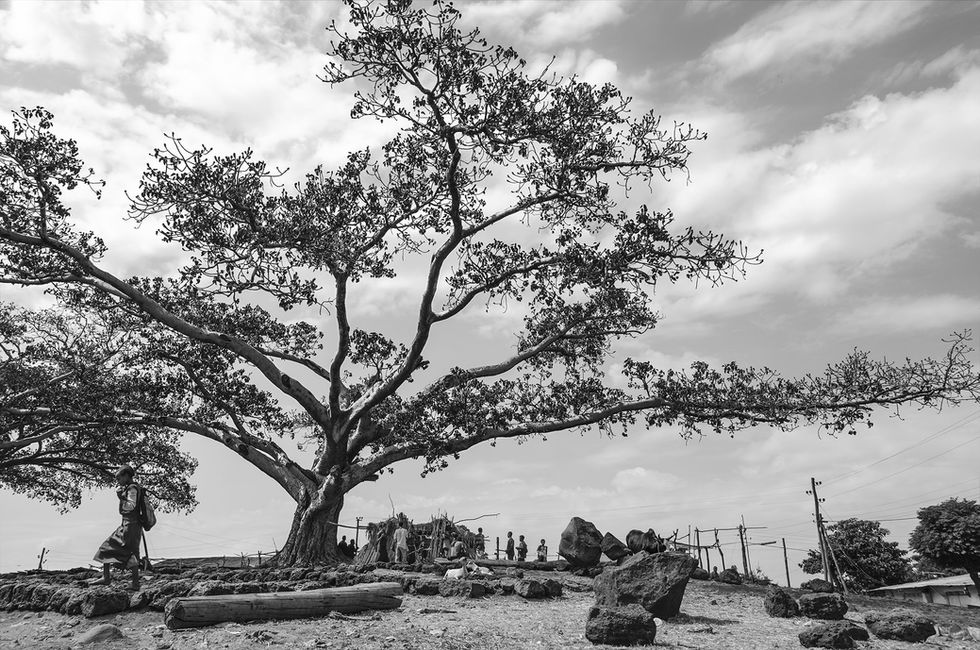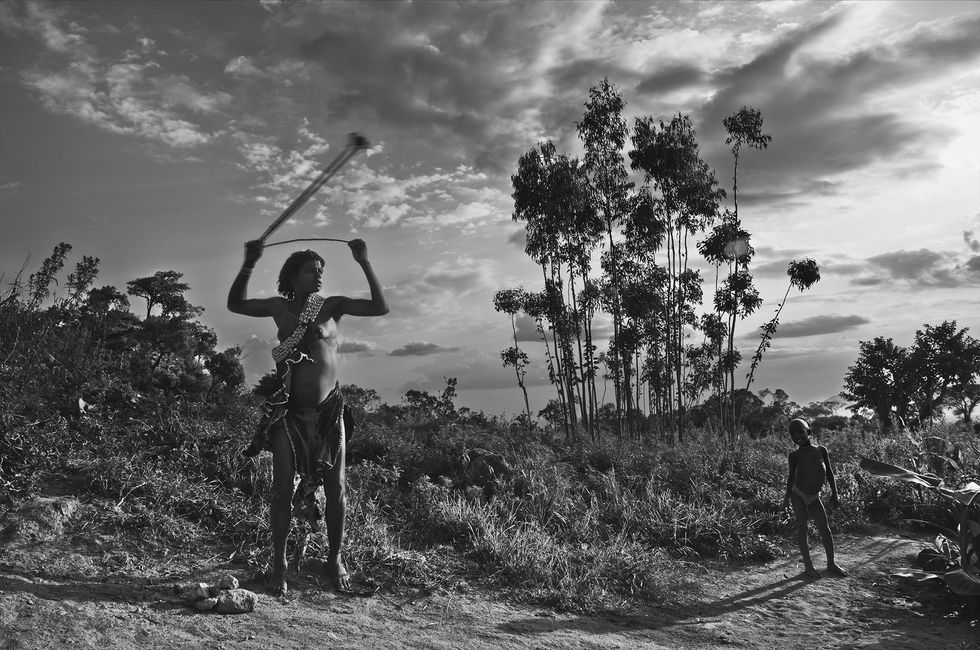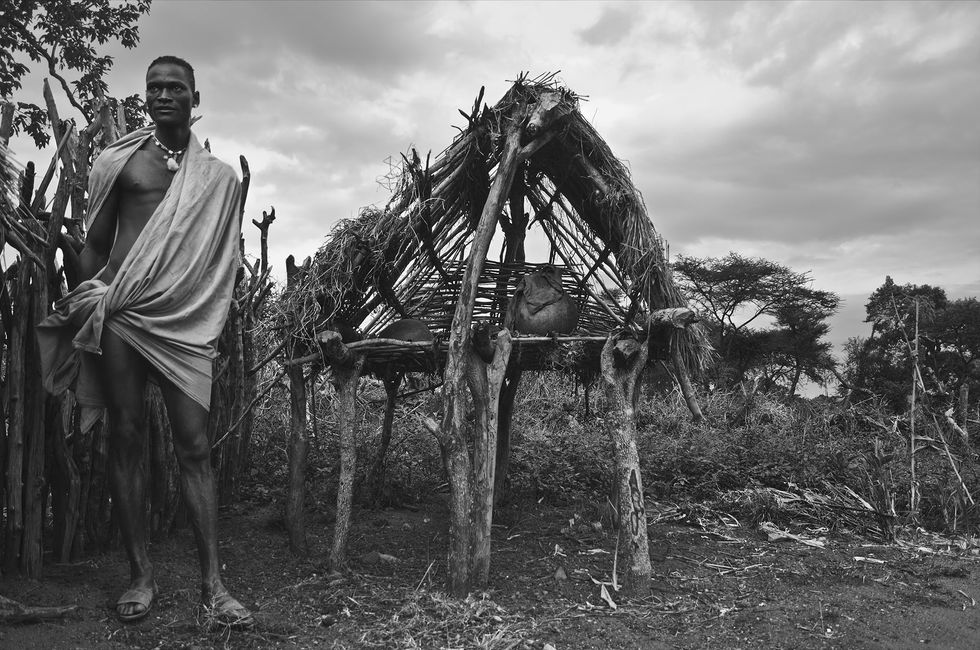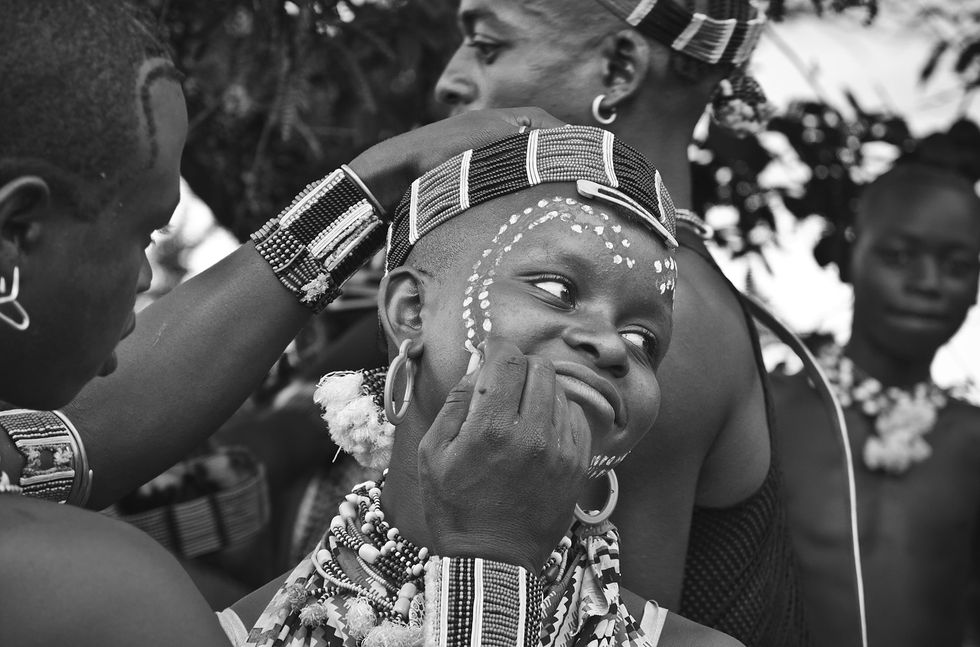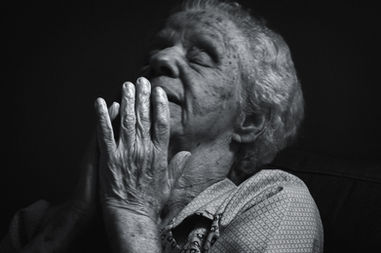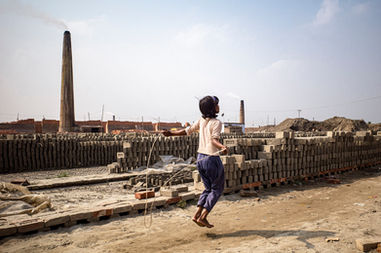
ABYSSINIAN DIARIES
With his camera in hand, Rpnunyez wanted to capture the real Ethiopia. In his own words, these are his tales of a futile journey.
November 25, 2022
PICTORIAL STORY
photography RPNUNYEZ
story RPNUNYEZ
I wanted to check, camera in hand, if the real Ethiopia is as they describe it: an extraordinary, exciting, exotic country; mountains of exuberant vegetation and volcanic depressions where life is barely possible, glass-enclosed towers of extemporaneous luxury surrounded by oceans of humble tin dwellings, rock-hewn churches and legendary holy cities of Islam, orthodox rites with millennial traditions and tribal ceremonies that have barely varied since the Bronze Age.
Nothing could be further from reality. Nothing exotic. Are their tribal dances essentially different from our popular festivals? No strange rituals. Are their scarifications stranger than our cosmetic surgeries? Are their celebrations based on fermented sorghum different from our large bottles? No extraordinarily good or excessively evil people. Have divine or human laws, lived here or there, prevented the human species from ceasing to be what it essentially is? Are their crooks, swindlers or abusers worse than ours for not wearing Armani? No incomprehensible tragedies, exiles or great migrations. Don't we already live among them without being aware?
There, as here, what is extraordinary, what is exciting, is life itself, ordinary life, ordinary life even anodyne, that same life that wherever it appears - among gold or among filth - floods us with dreams and hopes, with laughter and tears, with irrepressible desires to love and be loved, with the memory of the past, with the hope in the future.
Here, we, blinded by our persistent ethnocentrism, exacerbate their lack of freedom - polygamy, foreign religions, ancestral customs. Here, we are, as slaves of our mortgage contracts, slaves of our labor contracts, slaves of our exorbitant consumerism...are we, perhaps, freer than those we judge, perhaps rightly, as oppressed? Here, we, owners of almost everything except time, devour thousands and thousands of images from "other worlds", but we have a moral obligation to observe them, to go beyond their aesthetic dimension, to use them to understand who we really are. Perhaps we will discover that these "other worlds" are not such.
This is the story of a useless trip: nothing I saw was essentially strange to me but, paraphrasing Celaya -
"I keep hoping that photography is not just a cultural luxury consumed by neutrals who, washing their hands, disregard and evade."
-min.jpg)
ABYSSINIAN DIARIES I // Ethiopia : A country between the past and the future
Situated at an altitude of 2300m in the western border of the Great Rift Valley, with more than three million registered people, not taking into account an undetermined amount of them who survive in an administrative limbo. Addis Abeba is a city with enormous, sometimes cruel, contrasts.
The raised tram, recently built by the Chinese, crosses the city similar to a giant dorsal spine which symbolises a great metaphor of the Ethiopia of the beginning of the 21st century: a tense pulse between past and future, between poverty and wealth, between patriotic affirmation and neocolonialist economy. A tram, perhaps, for hope. Substantial national and international businesses and next-generation enveloping crystal buildings, analogous to enormous distant islands, let themselves be seen to children, the youth and to the elderly who survive between the ordinary, mundane misery and the enigmatic presence of a new unreachable world.
Like in any other metropolis, in no other city of Ethiopia can such a big number of disinherited people be found. There is almost no space for optimism in an ever-repeated story. Similar to an immense onion, adjacent layers and layers unconnected to each other; take over quite rapidly from streets full of luxurious jewelry to small settlements of modest homes of undulated plate. Amidst them, aging grand houses whose origin can be traced back to the brief Italian incursion, try to futilely maintain the colonial ambient mixed with misery and dignity.
People of all kinds, prostitutes in shacks who offer themselves to passers-by next to their own children, thieves, pickpockets…And among all of them, in vast numbers, hundreds of white mannequins who, in spite of their static way of living, bear stoically, like a metaphor, the enormous contradictions of the world they have been placed in.
To the north, around Lake Tana, millenary religious traditions coexist in perfect harmony. At the start of every day, the morning fog envelops the peninsula of Zége. Covered by thick vegetation where wild coffee beans are found in abundance; a natural habitat of a multitude of tropical species that is the location of one of the most impressive abbeys of the area: Ura Kidane Mehret.
The religion, be it orthodox Christian or Muslim, is radically present in the public and private life of the Ethiopian people. Mosques, churches, orthodox priests, veiled Muslim women, kneeling people and muezzins of both religions are part of the urban and rural landscape. Mothers and grandmothers alike in their white tunics with their babies over their shoulders, or teenagers recite their pledges in the intimacy of some isolated nook.
And hundreds of kilometres south of Addis…
Sunset approaches in Arba, dozens of Chinese motorbikes, Indian tuk-tuks and lorries create an immense dust cloud which takes hold of the surroundings. It finally disappears when it confronts the interminable and dull routine of dozens of women and girl carriers who ascend from the River Kulfo to the highest place in Sikela; a journey close to twelve kilometres of length for which they get paid a miserable 50 birrs (approximately 2 euros).
Their slow and steady pace, their almost horizontal trunk where they deposit their heavy load of wood, their arms exempt from any attempt of strength, their expression of painful resignation and their concentrated stare at the irregular floor beneath them so as to not fall, are images and emotions difficult to forget. When it seems that the only thing they can cope with is to perpetuate that monotone routine, they still have the strength to respond in an educated manner with a reverence and smile to the “selam” that I dedicate in a signal of respect and admiration.
ABYSSINIAN DIARIES II // The Magic Mirror of Lalibela
From hundreds of kilometres away and for days, weeks and even months, hundreds, thousands of pilgrims flock to Lalibela on the occasion of Genna, the Ethiopian Christmas. Lalibela, the African Jerusalem, is not only an extraordinary complex of monolithic churches, tunnels and secret passages; it is also an authentic journey to the beginning of our era.
Piously welcomed by the locals with food and foot washing, the pilgrims accommodate themselves on the slopes of the mountain next to the set, unique in the world, of monolithic churches carved into red rock at 2450 metres of altitude. Hundreds of tunics, impeccably white, give an air of dignity to the environment and to those who accumulate so many days and fatigue on their cracked feet.
Their humble and rural origin provides them with a genuine closeness and innocence, capable of breaking any language barrier and making it materially impossible to remain emotionally indifferent to them. They rarely allow themselves to be photographed individually because, for them, being photographed is an exceptional event full of hidden meanings. And that's precisely why this exceptionality provokes a subtle change of roles between the model and the photographer himself, who comes from a remote and unknown world for them. Their innocent gazes scrutinise us between fear and overconfidence; they disarm us of prejudices and return to us, like magic mirrors, those same questions that we want to ask them.
ABYSSINIAN DIARIES III // The Banna of Key Afer and The Clan of Tifa Dabo
They gradually get nearer the traditional meeting point. Today is market day in Key Afer, Red Land in Amharic. Starting at dawn, Harner, Banna, Tsmay and Ari carry, from tens of kilometers away, all types of products: fruits, vegetables, trinkets, wood and cattle, the essential richness of those ethnic groups. The market is a social act that promotes activity, it’s a place of exchanges, a meet-up point; so, it’s the ideal occasion to say farewell to friends and family who live at a distance of various days away.
A few kilometres away, Wantó, who like the rest of the Banna, doesn't know her age, isolated in the savannah in a place with mythical resonances, Saba, lives peacefully with her husband, her numerous children, her sorghum plantation and her sling which she calls "rosso".
Near them, Wado Gaya prepares an injection for his cattle, which is infected by the dangerous fly tsé tsé. Meanwhile, his wife Jinka Shello, helped by one of her six sons, prepares an infusion with coffee beans and a rudimentary campfire. The Banna relies on an economy of mere subsistence where the women, similar to the cattle, are a question of wealth for their family: each woman contributes her work and that of her children to the family.
And on the opposite slope of the gentle hills of Yinya that shelter them, Tifa Dabo, head of a Banna clan, prepares himself for a special day: one of his teenage sons will have to celebrate his initiation ceremony, his passage to adulthood.
Tifa is a rich man, his three wives Hailo, Faka and Barki, his 19 children, a considerable number of cattle, a ceremonial feather, a mirror, a pair of ragged pants, which he keeps as a real treasure, attest to this.
From dawn, young bachelors gather around gourds filled with fermented sorghum; they laugh, joke and sharpen their "alphas" sheathed in rudimentary leather holsters decorated with multicolored beads. Meanwhile, one of Tifa's young daughters, decorated with face paintings, is looking for a young man with a bundle of wicker; she has the privilege of choosing the wicker with which she wants to be whipped and demonstrate with a leap forward, chest to chest, how willing she is to bear the hard burden that awaits her if she is finally accepted by her suitor. Her scars on her back, frequently bleeding, attest to her
bravery and submission to tradition.
Evening is falling in Yinya and millions of stars are already appearing on its hills. The increasingly distant echoes of the monotonous chants put an end to a ceremony repeated a thousand times for ages.

Rpnunyez is a Spanish documentary photographer who does not photograph what he sees but what he says he is. He never thinks of his photographs as art objects or consumer items, and as he states, they have nothing to do with ephemerality either. Rpnunyez thinks of them as tools at the service of a simple idea so masterfully summarised by American photographer, Wayne Miller's words - “the universal truths of being human”. Rpnunyez firmly believes that, “the value of a photograph is shared, at least in equal parts, between the photographer and his models, who tolerate and accept his presence, who endure on many occasions his intrusion and insolence, and who in the end, are converted into paper and unaware of the passage of time, allow themselves to be observed, returning to us. like mirrors, some unknown part of ourselves.” In a certain sense, the photographer's job is none other than to compose stories where the central character and various visual clues weave a tapestry of sensations, of emotions, that give voice to that story.

The views, thoughts, and opinions expressed in the text belong solely to the author, and are not necessarily shared by The Pictorial List and the team.












